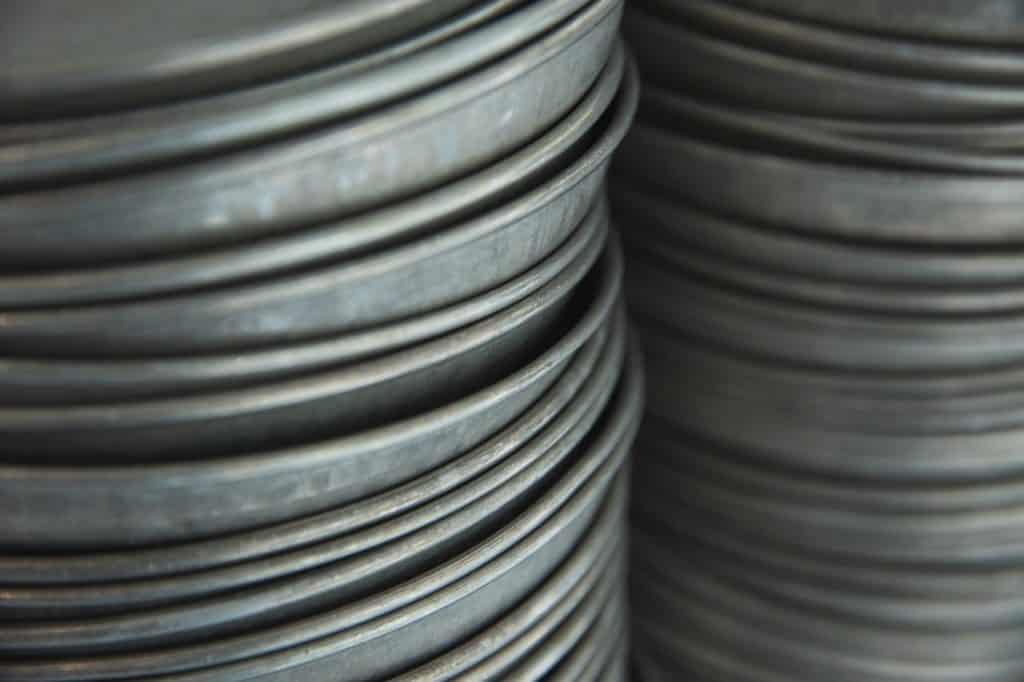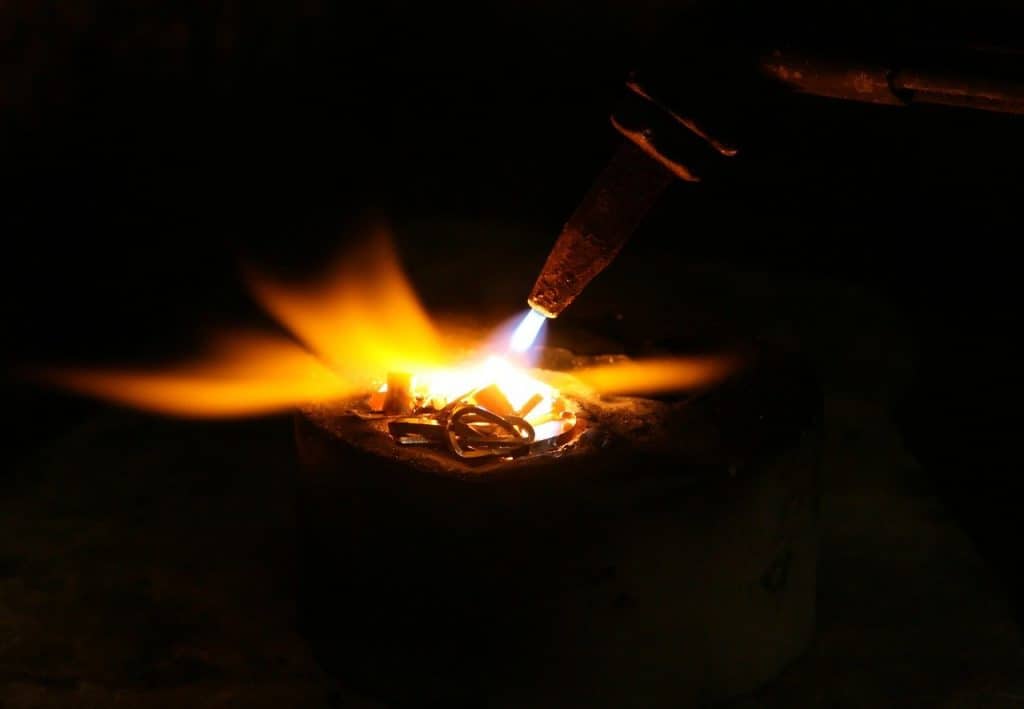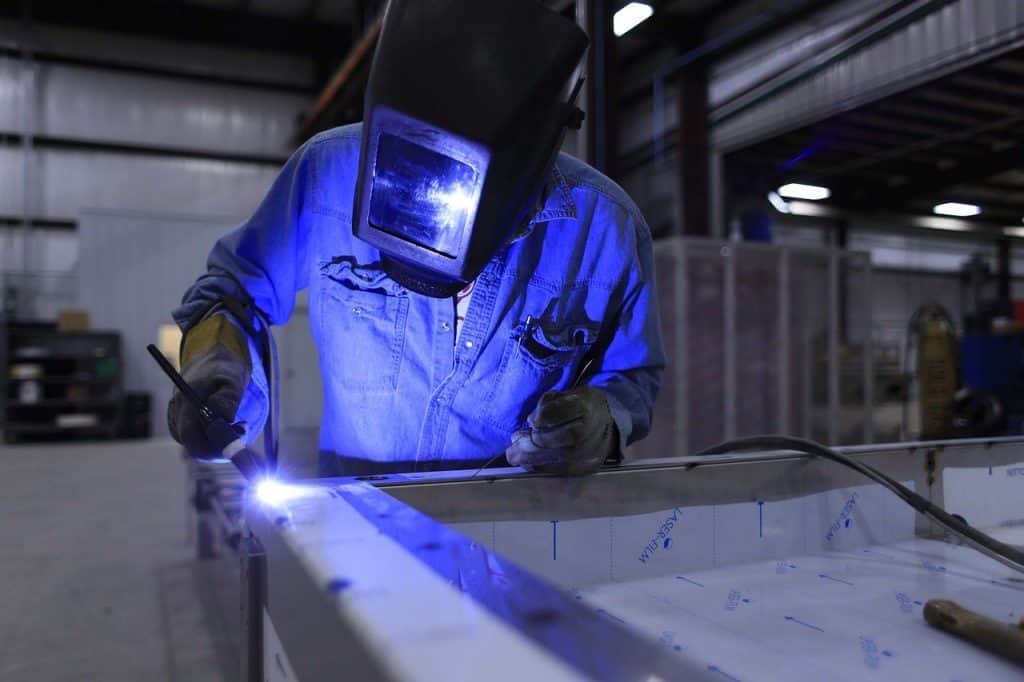Is there a way to identify cast iron in a metal object? Cast iron has been used in metalworking since the Bronze Age.
Over time, the process was refined because to the efforts of innovators like John Smeaton, often called the "father of modern concrete," who devised new techniques for creating castings that were both strong and resilient, with less susceptibility to breaking.
Cast iron has been used in countless ways to mould our world.
However, how can one go about making such complicated forms out of liquid metal? Come with us as we investigate this exciting production method!
The art of iron casting predates the Industrial Revolution.
Popular belief holds that ancient Mesopotamians or Middle Easterners invented it, but there's also evidence to suggest that ancient Hittites in Anatolia did it as well.
Around the year 2000 B.C., iron casting spread over Europe and Asia. About 2500 years ago, the Chinese cast bronze using clay moulds while Europeans were still using stone hammers.
Casting iron has been used as a metalworking technique for hundreds of years. This article will explain iron casting by discussing its history and manufacturing process.
Castings were formed by pouring molten metal into a sand or clay mould.
Since each component could be easily accounted for and cast separately, this method was ideal for mass-producing a limited number of products.
Technology advancements allowed for the widespread adoption of processes like lost-wax casting, which replaced the labor-intensive practise of pouring molten metal into sand or clay moulds.
Table of Contents
The History of Iron Casting
Have you ever been curious about how iron casting came to be? When did prehistoric people first imagine being able to shape metal into useful objects?
It's possible that not even the most thorough researchers, archaeologists, or scientists will ever learn the whole story. That's probably why studying the past is so fascinating, though.
The World’s First Castings
It has been debated among historians as to whether or not iron casting was practised in ancient China as early as 6000 BCE.
However, data offered by archaeologists contradicts both theories.
The copper frog, found in what was then Mesopotamia, is the earliest example of a cast component, dating back to 3200 BCE.
Although iron and other metals had been discovered, it was not until centuries later that they could be melted and poured into a mould, such as a casting.
The Hittites of ancient Egypt are credited with discovering the metal iron between 5000 and 3000 BCE. In this period, tools and weapons were made by pounding or hammering metal.
It was mined from meteorites and fashioned into implements and ornaments.
The Hittites refined the method of smelting iron between 2000 and 1200 BCE, heating the ore to remove impurities and increasing the metal's utility.
For decades, the creation of iron remained a closely-held secret of the Hittite people until about 1000 BCE, when Chinese metallurgists learned the superiority and workability of iron.
Iron Age
The Iron Age followed the Stone Age and the Bronze Age in human history, beginning sometime between 1200 and 600 B.C.
Much of Europe, Asia, and Africa entered what is known as the Iron Age when they began to produce iron and steel tools and weapons. In certain cultures, such as Ancient Greece, the transition to the Iron Age coincided with a fall in artistic and intellectual achievement.
Though iron may have been smelted on occasion by humans during the Bronze Age, the metal was likely viewed as subpar at the time. As a result, iron tools and weapons weren’t as robust or durable as their bronze equivalents.
More people started using iron after they discovered they could manufacture steel, a tougher metal, by heating iron with carbon.
The Hittites—who lived during the Bronze Age in what is now Turkey—may have been the first to produce steel.
When Was the Iron Age?
The fall of numerous major Bronze Age civilizations, such as the Mycenaean civilisation in Greece and the Hittite Empire in Turkey, marked the beginning of the Iron Age in the Mediterranean region and the Near East approximately 1200 B.C.
This resulted in the elimination of vital trade routes, the loss of ancient towns like Troy and Gaza, and a decrease in literacy rates throughout the area.
These Bronze Age civilizations mysteriously fell apart, but no one knows why. From 1250 to 1100 B.C.E., 150 years, the eastern Mediterranean region saw a series of severe droughts, which archaeologists believe played a major role in the collapse.
It's also possible that natural disasters, political turmoil, and the invasion of nomadic peoples played a part.
It has been theorised that a shortage of copper or tin, two essential ingredients in bronze production, may have arisen around this time due to a disturbance in trade lines. Thus, iron may have become the material of choice for metalworkers.
In general, historians agree that the Iron Age came to an end sometime around 550 BC, when Herodotus, known as the "Father of History," began writing "The Histories," however precise dates vary by area. With the rise of the Vikings around 800 AD, it came to an end in Scandinavia. The end of the Iron Age in Western and Central Europe is commonly thought to have occurred with the Roman invasion in the first century BC.
Greek Dark Ages

By the end of the Bronze Age, Greece had established itself as a cultural and economic centre of the Mediterranean.
Trade helped the Mycenaean culture amass vast amounts of riches. Because of this social stratification, the Mycenaeans were able to construct elaborate palaces.
However, Mycenaean Greece fell apart somewhere around the year 1200 B.C. There was chaos in Greece, and this era is sometimes referred to as the Greek Dark Ages.
The population of Greece may have plummeted during this time due to a famine, according to archaeological evidence. With the exception of Athens, major urban centres remained deserted.
People left cities in search of more peaceful, pastoral lifestyles centred around cattle farming.
Although the Mycenaeans had created a literate culture, the early Iron Age Greeks apparently did not, leading some researchers to conclude that they were illiterate.
This time period lasted for almost 300 years, although few relics from it have survived to the present day.
The Greek economy had fully recovered by the end of the Iron Age, ushering in the "classical" era of Greek history. Cultural highlights from Classical Greek history include the Parthenon, Greek tragedy, and the writings of philosophers like Socrates.
Political reform and a new type of governance known as demokratia, or "rule by the people," were also introduced to the world during the classical period.
Persian Empire
Nomadic pastoralists who herded sheep, goats, and cattle on the Iranian plateau in the Near East's Iron Age laid the groundwork for the modern nation-state of Persia.
Once mankind had mastered steel, that's when the Persians set up shop and built their empire. Compared to their bronze or stone counterparts, steel swords were much sharper and more durable.
Horses were used in battle by the ancient Persians as well. But they may have been the first to create a cavalry that was fully protected by armour, both the horses and the riders.
After its establishment by Cyrus the Great in about 550 B.C., the First Persian Empire expanded to cover a vast area, from the Balkans in Eastern Europe to the Indus Valley in India, making it one of the greatest empires in history.
Iron Age In Europe
Daily Life in the Iron Age The majority of Europeans lived in rural, agricultural areas. Utilizing iron implements simplified agricultural work.
In the Iron Age, Celts could be found all around Europe. Central Europe was the homeland of a confederation of peoples known as the Celts.
As a people, they huddled together in tight-knit clans that all spoke the same language and practised the same religion and customs. Celtic culture is thought to have developed somewhere about 1200 B.C.
Western Europe, including Britain, Ireland, France, and Spain, was settled by Celts. Their legacy lives on through the languages and customs that have been preserved in Ireland and the United Kingdom.
Iron Age Hill Forts
During the Iron Age, hill forts served as homes for people across most of Celtic Europe. Hill forts were protected by walls and ditches manned by soldiers to stave off attacks from other clans.
Inside the hill forts, families lived in primitive roundhouses made of mud and wood with thatched roofs. They had goats, sheep, pigs, cows, and geese in addition to growing their own food.
Bog Bodies
Numerous bog bodies from the Iron Age have been uncovered in various regions of Northern Europe. Bodies that have been mummified or preserved by peat bogs are known as "bog bodies."
The Tollund Man from Denmark and the Gallagh Man from Ireland are both examples of bog bodies dating back to the Iron Age.
All of the victims found in the bogs had one thing in common: they met violent ends.
The Lindow Man, discovered in a bog near Manchester, England, shows signs of having been beaten with a club, having his neck slashed, and being tortured with a rope made from animal sinew before being dumped in the bog.
Celtic people at the time did not have a written language, hence there is no documentation of why these individuals were executed and dumped in bogs. Still, there is scholarly speculation that the bog bodies were the victims of a religiously motivated ritual murder.
Many more Iron Age artefacts, including as swords, cups, and shields, have been uncovered from peat bogs. In rituals presided over by Druid priests, these may have also been used as offerings to pagan deities.
Iron Casting Takes Root In China
Among the earliest examples of iron casting in ancient China are the four statues in front of the Zhongyue Temple in Dengfeng.
These statues were cast around the year 1024 BCE. Chinese metallurgists once used bronze and copper castings widely in China's agricultural sector.
The introduction of the iron plough revolutionised farming. In agricultural settings, this tool significantly facilitated ploughing.
Metallurgists in China didn't start making significant contributions to the evolution of iron casting until 645 BCE, when they began using sand moulding. Here, a mould is made by packing sand tightly around an object. Castings are produced by pouring molten metal into a mould.
One advantage is that the material can be easily shaped into a variety of different shapes.
The process is time-consuming and prone to making design mistakes.
Nonetheless, this is the earliest known use of the technique, solidifying China's position as a pioneer in the evolution of iron casting.
The Invention Of The Blast Furnace
China also invented the blast furnace, which was a major technological advance. This is the standard process for producing pig iron, a low-grade, brittle iron with a high carbon content.
To be used in the production of steel, iron must first undergo refining. While fuel is being fed into the top of the furnace, blast, or hot combustion air, is sucked in through tuyere pipes located at the bottom.
Relics of the earliest blast furnaces date back to the Han Dynasty of China in the 1st century BCE. Still, blast furnaces didn't become commonplace in Europe until the 1100s. The blast furnace was developed in Sweden, and its use quickly spread to neighbouring countries like France and Belgium in the 1300s and ultimately to England by 1491.
Iron Casting Expands Into Europe
During this time period (1400s), iron casting was also introduced to Europe. The first known example of a cast product in Europe is a water pipe made of cast iron and located in Dillenberg Castle in Germany. Specifically, 1455 is the casting year. During the Reformation in the 16th century, cast iron was also used to make cannons in Burgundy, France, and England.
America’s First Ironworks

In 1619, the first iron foundries in North America were constructed by the London-based Virginia Company. In a place called Falling Creek Ironworks, which is located close to the James River.
The colonists moved to this area because of the rich ore deposits nearby and the availability of nearby bodies of water for hydroelectric power and maritime transportation.
In addition, the surviving records indicate that iron was manufactured here. But historians believe that peak productivity was never reached.
In 1642, the first iron foundry in the Americas opened in the area now known as Lynn, Massachusetts at the Saugus Iron Works.
The Saugus pot, the first iron casting in the United States, was also made in this region. As a result of its importance to the growth of the American manufacturing sector, the Saugus Iron Works has been designated as a National Historic Site.
Britain’s Early Iron Manufacturing Efforts
Between 1700 and 1750, Britain imported a lot of cast iron from Sweden to meet the rising demand. Earlier British history, before the advent of the Industrial Revolution.
Iron was produced at the time in small, regional factories that had to be situated close to water, limestone, and charcoal in order to function. This was due to a lack of available infrastructure for the distribution of both unprocessed materials and finished goods.
Because of the size of furnaces available at the time, production was restricted.
Iron ore was abundant in Britain, but the resulting pig iron was of low quality because it was processed in charcoal-fueled blast furnaces.
This meant that there were significant barriers to the widespread use of cast iron. In order to remove the impurities, pig iron must be pounded, making wrought iron a valuable commodity. Sadly, this was a time-consuming process, and cheaper imported wrought iron was readily available.
This meant that at the time, British iron could only be used to produce inferior products like nails. But by the year 1800, iron had become Britain's major export and was the foundation of the country's new industrial economy.
Innovations Drive Iron Casting In Britain
The 1700s were a time of rapid development in the production and application of iron, which had far-reaching consequences for Britain.
It wasn't until 1709 that Abraham Darby replaced charcoal with coke in his iron-making process. An essential ingredient in the evolution of the iron casting industry was coke, a solid fuel produced by heating coal in the absence of air.
Coke was a far better option than charcoal in terms of the economy and the environment. In order to facilitate mass production, coke allowed for the use of larger furnaces.
Coke would hold up better than charcoal under all that iron. There were many innovations in response to Darby's idea, but the issue of brittle iron remained unresolved.
As iron casting progressed, the steam engine emerged as the next revolutionary invention. Englishman Thomas Newcomen came up with the concept in 1712.
A coal mine's primary use for a steam engine was to drain excess water. This breakthrough was critical to the growth of the iron casting industry and the industrialisation of England because of the importance of coal in the process.
Between 1770 and 1790, Scottish inventor James Watt improved upon the work of Englishman Thomas Newcomen to develop a steam engine that could be used to power machinery, locomotives, and ships. As a result, the distribution of both inputs and outputs within the industry benefited from increased velocity and efficiency.
James Watt made a breakthrough when he realised the steam engine's design was inefficient because the cylinder had to be constantly reheated after being cooled.
Watt's design improvement, the separate condenser, eliminated this energy waste, significantly boosting the power, efficiency, and cost-effectiveness of steam engines.
Consequently, Watt improved upon his engine to revolutionise transportation, removing a major impediment to growth in the iron production sector. Shipping goods is now faster and more affordable than ever.
The Invention Of The Rolling Technique

Henry Cort's work in 1783 enabled the transition from pig iron to wrought iron and the mass production of non-brittle iron by developing two methods for removing impurities from the metal.
Pig iron is a slang term for the raw, brittle iron that is smelted out of a blast furnace.
A faster and cheaper method of producing iron bars was developed by Cort in 1783 thanks to his invention of grooved rollers. A rolled plate would be pounded down or sawn into strips in the past.
The puddling method, developed by Cort in 1784, entails stirring molten pig iron on the bed of a furnace while fire and hot gases swirl above it heats the metal.
Because of this, the metal was protected from the energy source. The gases being recycled also helped eliminate the iron's carbon content.
Iron became thicker after being exposed to air, allowing puddled balls to be extracted without disturbing the remaining liquid impurities.
Puddled iron, which is stronger and more malleable than pig iron, can be hammered and finished using the grooved rollers that Cort invented, just like wrought iron.
Rollers helped with the filtering process. In addition, the iron was more manageable in bar form.
After Cort's innovations made it possible to remove impurities from pig iron with less labour, mass production of cast iron goods became a reality.
Britain Becomes Europe’s Largest Producer Of Ironworks
Growing demand from the British military caused iron production to double between 1793 and 1815. As a result, the size of blast furnaces increased, allowing the United Kingdom to finally meet its own domestic demand.
The end of the War of 1812 in 1815, however, brought peace and quiet. After the war was over, the demand for and price of iron dropped.
However, by the early 20th century, Britain had become Europe's leading producer of both iron and steel. The innovation of iron casting techniques had a profound impact on the country's economy and way of life.
Conclusion
Iron casting has been used in metalworking since the Bronze Age and has been perfected by pioneers like John Smeaton. It was already being practised in ancient China as early as 6000 BCE before it spread throughout Europe and Asia around 2000 BCE. The copper frog, found in Mesopotamia, is the earliest example of a cast component, dating back to 3200 BCE. Lost-wax casting, for example, has largely replaced the time-consuming process of pouring molten metal into sand or clay moulds because of technological advancements.
The Iron Age, the third period of human history after the Stone Age and the Bronze Age, began between 1200 and 600 B.C.E. Many major Bronze Age civilisations collapsed during this time, including Greece's Mycenaean culture and Turkey's Hittite Empire. Trade routes were cut off, cities like Troy and Gaza were abandoned, and literacy rates dropped. Other factors included natural disasters, political unrest, and the invasion of nomadic peoples. The arrival of the Vikings in the early 1100s CE marked the end of the Iron Age, which had begun around 550 BC. Traditionally, historians have considered the Roman conquest of Western and Central Europe in the first century BC to mark the end of the Iron Age in those regions. Due to a possible famine, the Greek population may have dropped dramatically during the Dark Ages, and the early Iron Age Greeks apparently did not have a literate culture.
The Greek economy recovered by 300 years, ushering in the "classical" era of Greek history, which included the Parthenon, Greek tragedy, and the writings of philosophers like Socrates. Using steel swords and horses, the Persians established their empire. The First Persian Empire was one of the largest in history, stretching from what are now the Balkans in Eastern Europe to the Indus Valley in India. During the Iron Age, Celts could be found all around Europe, living in tight-knit clans that spoke the same language and practised the same religion and customs. Most people in Celtic Europe lived in hill forts, where they occupied primitive roundhouses constructed of mud and wood and topped with thatched roofs.
A number of bog bodies dating back to the Iron Age have been discovered in different parts of Northern Europe, and some have hypothesised that they were the victims of a ritual killing with a religious undertone. Peat bogs have yielded Iron Age artefacts such as swords, cups, and shields. Around the same time that the iron plough was introduced, in 1024 BCE, the four statues in front of the Zhongyue Temple in Dengfeng were cast. The first known European cast product is a cast iron water pipe found in Dillenberg Castle in Germany. Cast iron was also used to make cannons during the Reformation in 16th-century Burgundy.
The Virginia Company, headquartered in London, built the continent's first iron foundries in 1619. In 1642, the Saugus Iron Works in Lynn, Massachusetts, became the first iron foundry in the Americas. Cast iron was in high demand in the 1700s, and Britain imported a lot of it from Sweden. British iron ore was plentiful, but the pig iron it produced was of poor quality. Because of the labor-intensive process of pounding pig iron to remove its impurities, wrought iron is a highly sought after commodity.
When Abraham Darby developed his method of producing iron in 1709, he used charcoal instead of coke. By replacing charcoal with coke, larger furnaces and the steam engine could be utilised. James Watt built on Thomas Newcomen's ideas to perfect a steam engine that could be used to propel any number of conveyances, from factories to trains to ships. His innovation of a separate condenser greatly improved the power, efficiency, and cost-effectiveness of steam engines by removing energy waste. Because of this, the iron industry was able to expand, and transportation was reimagined.
In 1783, Henry Cort developed the Rolling Technique, which involved two methods of purifying the metal and allowing for its transition from pig iron to wrought iron and the mass production of non-brittle iron. Puddling is a method for heating pig iron by stirring it on the bed of a furnace while fire and hot gases swirl above it; it was invented by Cort in 1784. Cort's grooved rollers allow puddled iron, which is stronger and more malleable than pig iron, to be hammered and finished in the same way as wrought iron. Because of the improvements introduced by Cort, removing impurities from pig iron required much less labour than before, allowing for the mass production of cast iron goods and ultimately making Britain Europe's leading producer of ironworks.
Content Summary
- Cast iron has been used in metalworking since the Bronze Age.
- Cast iron has been used in countless ways to mould our world.
- Casting iron has been used as a metalworking technique for hundreds of years.
- This article will explain iron casting by discussing its history and manufacturing process.
- The Hittites—who lived during the Bronze Age in what is now Turkey—may have been the first to produce steel.
- The fall of numerous major Bronze Age civilizations, such as the Mycenaean civilisation in Greece and the Hittite Empire in Turkey, marked the beginning of the Iron Age in the Mediterranean region and the Near East approximately 1200 B.C.This resulted in the elimination of vital trade routes, the loss of ancient towns like Troy and Gaza, and a decrease in literacy rates throughout the area.
- By the end of the Bronze Age, Greece had established itself as a cultural and economic centre of the Mediterranean.
- Numerous bog bodies from the Iron Age have been uncovered in various regions of Northern Europe.
- Many more Iron Age artefacts, including as swords, cups, and shields, have been uncovered from peat bogs.
- Among the earliest examples of iron casting in ancient China are the four statues in front of the Zhongyue Temple in Dengfeng.
- Metallurgists in China didn't start making significant contributions to the evolution of iron casting until 645 BCE, when they began using sand moulding.
- In 1619, the first iron foundries in North America were constructed by the London-based Virginia Company.
- In 1642, the first iron foundry in the Americas opened in the area now known as Lynn, Massachusetts at the Saugus Iron Works.
- As iron casting progressed, the steam engine emerged as the next revolutionary invention.
- Between 1770 and 1790, Scottish inventor James Watt improved upon the work of Englishman Thomas Newcomen to develop a steam engine that could be used to power machinery, locomotives, and ships.
- Henry Cort's work in 1783 enabled the transition from pig iron to wrought iron and the mass production of non-brittle iron by developing two methods for removing impurities from the metal.
- A faster and cheaper method of producing iron bars was developed by Cort in 1783 thanks to his invention of grooved rollers.
- After Cort's innovations made it possible to remove impurities from pig iron with less labour, mass production of cast iron goods became a reality.
Frequently Asked Questions
- Luster: Metals are shiny when cut, scratched, or polished.
- Malleability: Metals are strong but malleable, which means that they can be easily bent or shaped. ...
- Conductivity: Metals are excellent conductors of electricity and heat.
Metals are typically malleable (they can be hammered into thin sheets) or ductile (can be drawn into wires). ... In physics, a metal is generally regarded as any substance capable of conducting electricity at a temperature of absolute zero.
Gold, which is not only the most valuable of metals, but also is without its peer in freedom from alloy. It is got without smelting; wherever it exists it is visible to the eye; and it consorts with little else than pure silver.
In our Iron cast foundry, there are 2 main methods for iron casting: sand casting or lost foam casting method.
Iron casting is a manufacturing process in which a molten material is poured into a mold, which contains a hollow cavity of the desired shape, and then allowed to solidify. The solidified part is also known as a casting, which is ejected or broken out of the mold to complete the process.

